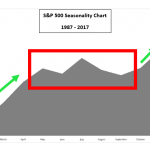The just-released minutes of the European Central Bank’s July meeting keep the door open for a September rate cut but without any pre-commitment.July’s ECB minutes reflected the image of a central bank that has grown more cautious on both the growth and inflation outlookRemember that at the July meeting, ECB President Christine Lagarde sounded more cautious regarding next steps for the central bank and avoided giving any forward guidance on monetary policy. The just-released minutes of the meeting echoed exactly that: an ECB that had become more cautious on the growth and inflation outlook and that wants to keep all options open for the September meeting.Here are the most important phrases from the minutes:
From today’s minutes, it becomes clear that the ECB would like to continue cutting rates and is more certain of what to do than it was at the June meeting. What to expect from the September meeting?Today’s minutes mark the end of the summer chill for the ECB. Indeed, with the July press conference the ECB had successfully managed to have at least a few weeks without daily market speculations about what the it would do next. Market turbulence and US macro data had put global spotlights on the Federal Reserve. Now, with three more weeks to go before the next policy meeting, the ECB will attract more attention once again. In fact, this week’s eurozone data sent two important messages: growth and inflation data is still highly blurred by one-off factors, but underneath is an increased stagflationary risk. While the drop in headline wage growth today clearly supports call for further rate cuts, underlying wage growth (without base effects from one-off inflation compensation schemes) in Germany actually increased. This acceleration of negotiated wages in Germany seems to be a better proxy for underlying inflationary pressure than the headline numbers. At the same time, the improvement in today’s PMI has to be taken with a pinch of salt as it seems to be mainly driven by stronger French services due to the Olympics. Higher selling price expectations in the PMIs illustrate the stickiness of inflation.Taking all these developments together, there is a high chance that the ECB will have to revise its macro projections again in September. While there is a clear risk that the central bank will have to lower its growth forecast and potentially might have to actually push out the entire growth profile for 2024 and 2025 again, the ECB might also be forced to alter its wage growth profile. In June, it expected a gradual slowing of wage growth to 3% year-on-year by the end of 2026. With continued high wage demands, at least by unions in Germany, this wage growth profile currently looks somewhat too optimistic. This very mixed bag of recent data releases and the risk of a small stagflationary push will intensify the debate at the ECB in the coming week. In fact, the central bank is definitely not alone with a more principal question: should it continue squeezing the last bit out of inflation or will we see another turning point with central bankers jumping in to save weakening economies? Needless to say that setting these priorities is getting more complicated when stagflation risks increase. Still, the new stagflationary risk is not yet large enough to stop the ECB from cutting rates again in September. However, it looks like a more complicated decision than markets are currently pricing in.More By This Author:Polish Retail Trade Stalls As Consumption Remains Key Growth Driver
Data Continues To Cement September Fed Cut
FX Daily: Sticky Wages, Stronger Euro









Leave A Comment